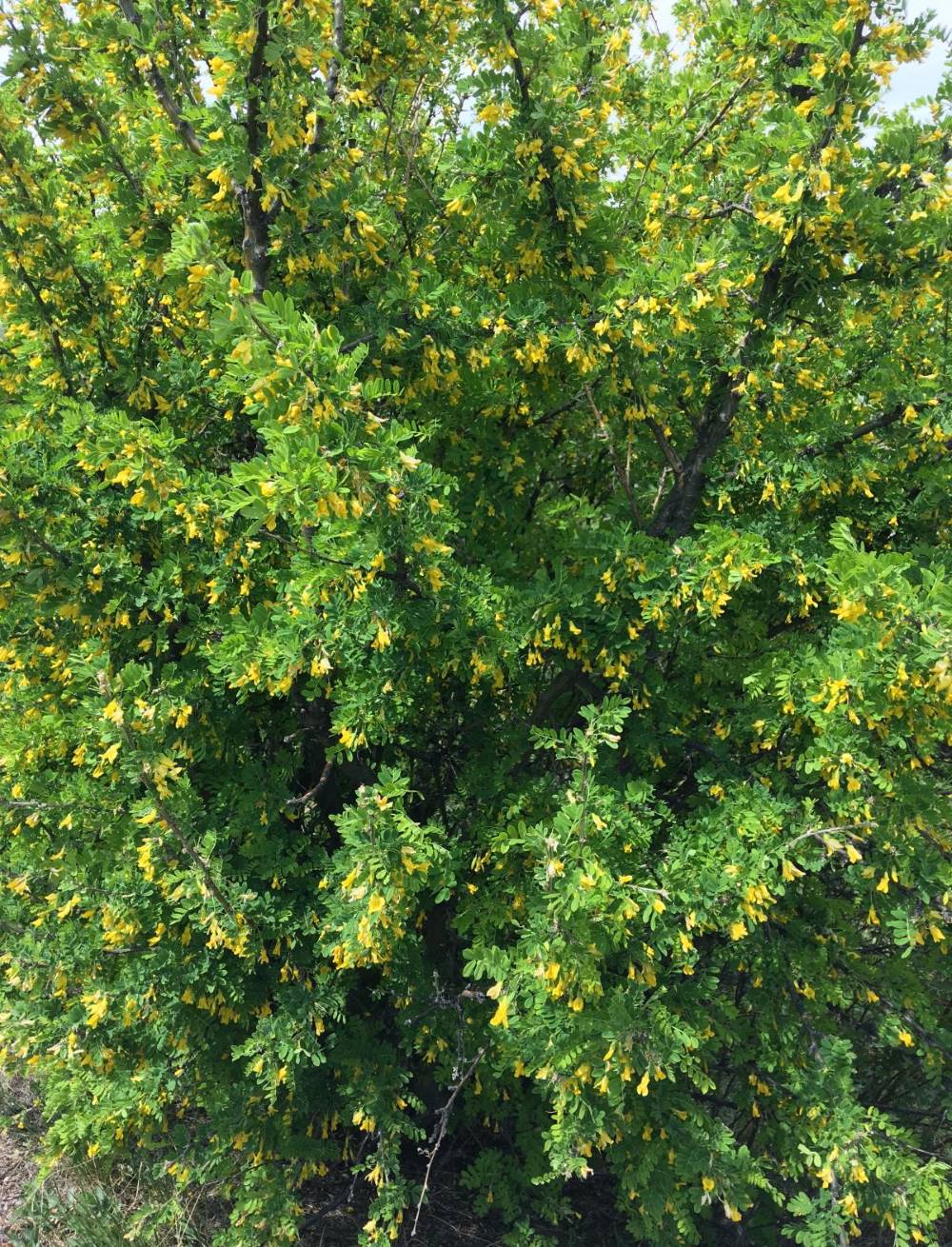
Caragana
Caragana arborescens
Caraganas have been widely planted, terribly neglected, and generally underappreciated. However, this is unfair. We owe the caragana an enormous debt of gratitude. Most of us would not be here without these shrubs! They created shelterbelts so that early farms would have protection from wind. They helped to divide property lines. They have created habitat for birds and shelter for wildlife. They have made barriers and enriched our soils with their nitrogen fixing. They have helped prevent soil erosion. They have kept snow from drifting across the roads in days when people still traveled by horse and buggy. In short, they are pioneers and survivors. It is time we began treating them with a little appreciation!
The word caragana comes from the Tartar word Karaghan, which is what the ancient Mongols and Tartars called this shrub. Native to Russia, Siberia, and northern China, when we think of caragana we are usually thinking of Caragana arborescens. Introduced to the Canadian prairies in the 1880’s, these hard working shrubs were a fixture of prairie landscapes by the 1920’s. They are basically indestructible. From semi-arid and almost desert conditions, the caragana can endure intense heat, intense cold, and requires no care once established. It can endure crowding, extremely poor soil, browsing animals, and extreme neglect. For a plant that is not native here, it has certainly done well for itself. Conquest, Saskatchewan proudly proclaims itself to be the caragana capital of the world!
The yellow pea-like flowers are actually quite showy (if brief), and bees utilize them as a nectar source. Caragana arborescens grows 10-15 ft. tall and 6-8 ft. wide. It makes an excellent hedge and an excellent barrier plant- as anyone who has ever tried to get through a hedge of these can tell you!
Caraganas still have a place here (despite their tendency to self sow and become a nuisance). While the species plant is not suitable for an urban yard, it is still useful in shelterbelts.
When we do see this species used in urban landscaping, it tends to be one of the following forms:
- ‘Pendula’. This is a top grafted form usually sold as “weeping caragana”. The branches are indeed pendulous.
- ‘Walker’ is not much better, also top grafted and also weeping, but with extremely fine, almost thread-like foliage.
- ‘Lorbergii’. Lorberg’s caragana is also called fern-leaf caragana, with very fine-textured leaves and an open, airy habit. It grows about 12 ft. tall and 6-8 ft. wide and is extremely beautiful.
- ‘Sutherland’ was developed in Saskatoon and introduced in 1944. This is a columnar caragana that grows about 15 ft. tall and only about 3-5 ft. wide. It is also entirely sterile and does not produce seed.
- ‘Tidy’ was introduced by the Morden Research Station in Manitoba and the name refers not to the growth habit but rather to the fact that it is sterile, producing no seedpods.
The average lifespan for a caragana ranges from 80-140 years. Very old specimens are gorgeous, with trunks as thick as 4” around. They are occasionally used by woodworkers since caragana wood is beautiful.

